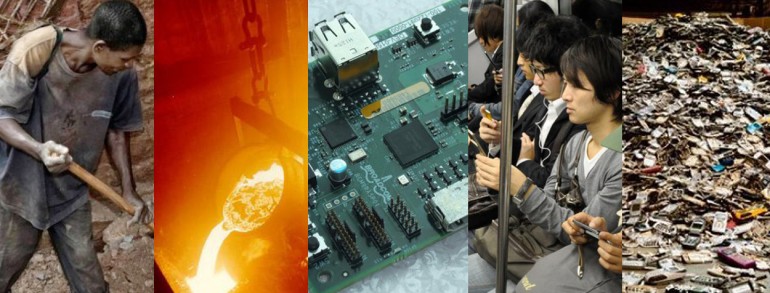Our mobile devices contain an almost endless list of minerals and raw materials, including the so-called “conflict minerals” 1: tantalum, tungsten, tin (known as 3Ts) and gold sourced from the Democratic Republic of Congo (DRC) and Great Lakes region. These minerals are hidden inside many of the products we use every day.
Gold is traditionally found in jewellery and coins, but its use in other industries –from electronics and medicine to nanotechnology and the automotive industry to food– is growing. Gold as a “safe haven” investment is also on the rise.
Tantalum is perhaps the best known of the three Ts and is used to manufacture tantalum electrolytic capacitors. These have several advantages over aluminium electrolytic capacitors because they can store a greater charge in a much smaller size, hence their higher price and important application in small electronic devices like phones, laptops, etc. The DRC is home to 80% of the world’s tantalum reserves. Tin is mainly used in alloys with other metals to protect them from rust. In fact, tin is used to coat sheets of steel to make tinplate. It is also used for soldering small parts together in mobile devices, computers, cars and electronic circuits, printers and transistors in general.

